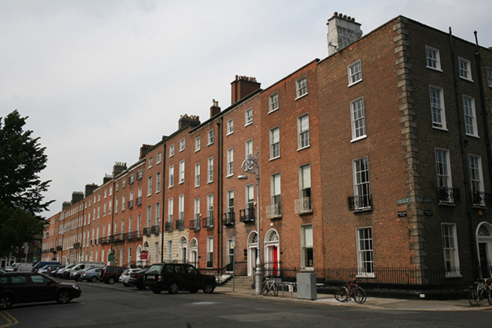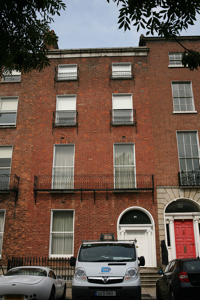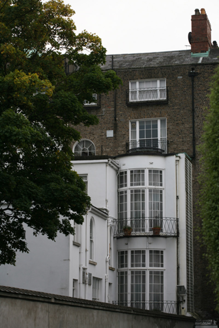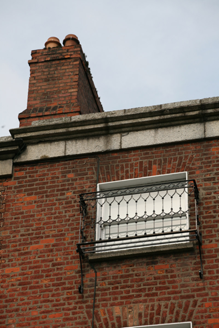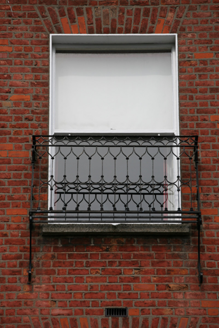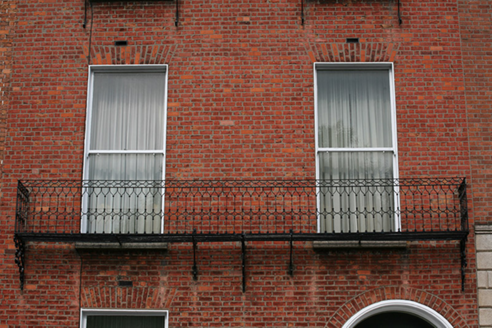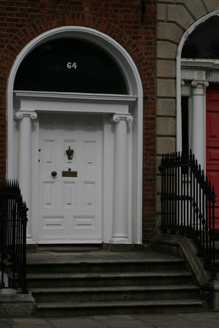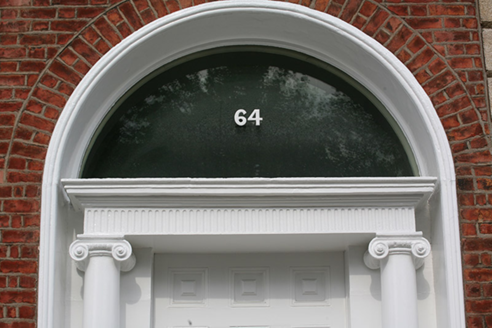Survey Data
Reg No
50930083
Rating
Regional
Categories of Special Interest
Architectural, Artistic
Original Use
House
In Use As
House
Date
1815 - 1825
Coordinates
316543, 233127
Date Recorded
10/09/2015
Date Updated
--/--/--
Description
Terraced two-bay four-storey over basement townhouse, built c. 1820, with three-stage two-storey over basement flat-roofed return and bowed two-storey over basement return to rear (north) elevation. Now in residential and office use. M-profile slate roof set behind parapet wall with moulded granite coping and frieze, and parapet gutters. Replacement red brick chimneystacks with lipped clay pots to west party wall. Red brick walls laid in Flemish bond with cement pointing, buff brick walls to rear. Moulded granite plinth course over rendered basement wall. Gauged brick square-headed window openings with granite sills and timber sash windows; original eight-over-eight pane to basement with iron grille and granite surround, early-twentieth century replacement one-over-one sash windows to remainder, having horns. Late-nineteenth century or early-twentieth century iron balconettes to second and third floors, full-span to first floor. Round-headed opening to rear east-side and to upper floor of return. Some Wyatt-style timber sash windows with iron sill-guards to rear elevation. Bowed tripartite multi-paned timber French windows to return with bowed iron balconettes. Gauged brick round-headed door opening with masonry Ionic doorcase comprising square-headed door opening flanked by Ionic columns supporting fluted lintel entablature and plain fanlight. Original timber panelled door with eleven raised-and-fielded panels and brass door furniture opening onto granite platform with nosed granite steps to street. Platform and basement enclosed by original decorative wrought- and cast-iron railings set on moulded granite plinth wall. Original granite steps with iron balustrade provide access to basement. Forming part of a continuous terrace of former townhouses lining north side of Fitzwilliam Square. Recent brick wall and gate to north boundary on Pembroke Lane.
Appraisal
Built as a unified terrace comprising Nos. 61-64 (50930086-3), this townhouse appears to have been extensively renovated and extended at the turn of last century, adding a layer of architectural detailing and interest. The façade composition remains intact, and is complemented by the well executed ironmongery, timber sash windows and the handsome Ionic doorcase which forms the decorative focus. It contributes to the historic character of the square and the wider south Georgian core. According to Casey (2005) 'the front and rear drawing rooms have painted panels of c. 1830 showing landscapes and ruins flanked by paired atlantes and framed by scrollwork borders.' Laid out in 1791 by the surveyors J & P Roe, Fitzwilliam Square was the last of the city’s Georgian squares to be completed. Development was staggered and progressed slowly until after the Napoleonic Wars and Waterloo.
